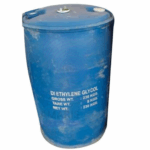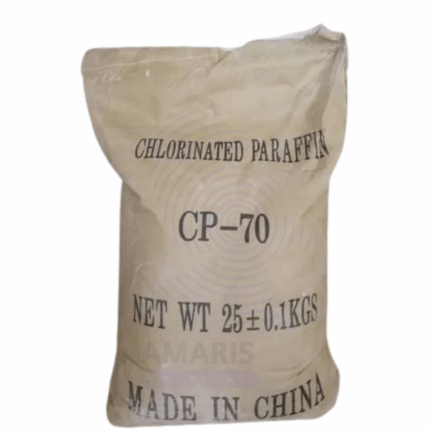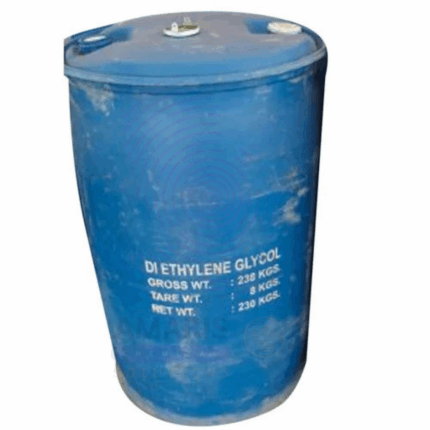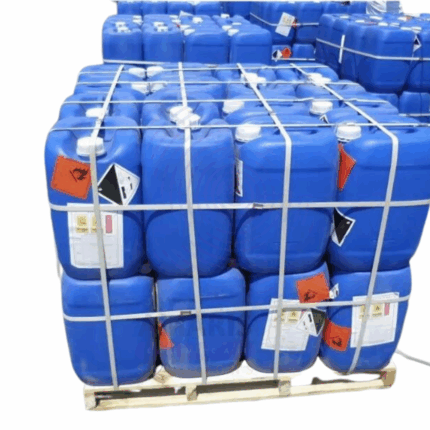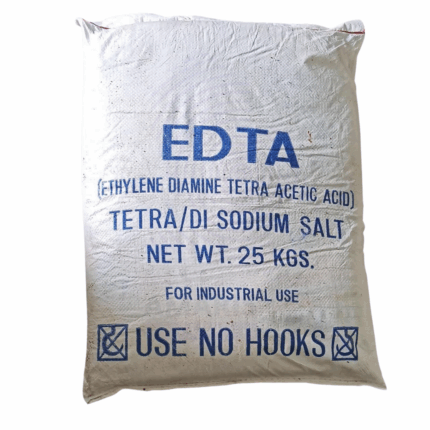Diethyl Phthalate
Whatsapp Order
Diethyl Phthalate is a high-purity, colorless, oily liquid with a faint, sweet aromatic odor. With a minimum of 99% active content, DEP 99% is a trusted solvent and plasticizer that offers excellent stability, low volatility, and high compatibility with a wide range of organic and polymeric materials. It is widely used in the cosmetic, pharmaceutical, plastics, coatings, and fragrance industries where purity is critical for both performance and safety. Its mild toxicological profile and solvency characteristics make it a versatile component in numerous sensitive and industrial applications.
Description
Table of Contents
Toggle
Diethyl Phthalate
Primary Uses
- Plasticizer for Polymers and Resins
- Used as a primary plasticizer for cellulose acetate, cellulose nitrate, and polyvinyl acetate to impart flexibility and durability.
- Enhances elasticity and clarity in molded goods, films, and coatings.
- Offers good plasticization for PVC in non-critical applications where clarity and low volatility are needed.
- Fragrance and Cosmetic Applications
- Functions as a fixative in perfumes and body sprays to slow down evaporation and extend fragrance retention.
- Acts as a carrier solvent for essential oils and aroma chemicals in formulations requiring purity and inertness.
- Used in deodorants, lotions, and hair care products where solubility and mildness are necessary.
- Pharmaceutical and Topical Products
- Employed as a solvent and carrier in topical pharmaceutical preparations such as ointments, gels, and creams.
- Used in transdermal delivery systems to enhance active ingredient dispersion and penetration.
- Suitable for formulations requiring low reactivity and high purity.
- Solvent for Industrial and Chemical Formulations
- Serves as a high-purity solvent in dyes, resins, and inks where slow evaporation and solvency are critical.
- Applied in the manufacture of surface coatings, printing inks, and polishes to improve workability and film formation.
- Used in adhesives and sealants for its compatibility and softening properties.
- Paints, Coatings, and Finishes
- Enhances flow, spreadability, and gloss in lacquer and coating systems.
- Improves flexibility and prevents cracking in cured paint films.
- Serves as a coalescing agent in specialty coatings.
Secondary Uses
- Insect Repellents and Pesticide Carriers
- Acts as an effective solvent and dispersing agent in mosquito repellent formulations.
- Used in agriculture and public health products requiring controlled evaporation and safety on skin contact.
- Personal Care and Hygiene Products
- Incorporated in nail polishes, removers, and bath oils for its solvency and spreadability.
- Used in aftershaves and cleansing creams as a mild and non-reactive carrier.
- Textile and Leather Industry
- Functions as a softener and lubricant in textile processing.
- Used in leather finishing formulations to impart flexibility and smooth texture.
- Laboratory and Analytical Use
- Used as a high-purity solvent in analytical chemistry and research.
- Applied in the extraction and purification of organic compounds.
- Electronics and Optical Industry
- Serves as a cleaning and processing solvent for electronic components where low residue is essential.
- Applied in specialty optical formulations and lens coatings.
- Plastic Film and Packaging
- Used in the production of flexible plastic films and sheets, especially those requiring transparency and stability.
- Improves processing behavior and flexibility in food-safe and cosmetic packaging.
KEY PRODUCT FEATURES
1. Basic Identification Attributes
- Chemical Name (IUPAC): Diethyl benzene-1,2-dicarboxylate
- Common/Trade Name: Diethyl Phthalate 99%, DEP 99%
- CAS Number: 84-66-2
- HS Code: 2917.39.00
- Molecular Formula: C₁₂H₁₄O₄
- Synonyms:
- Diethyl Phthalate
- DEP
- Ethyl phthalate Phthalic acid diethyl ester
2. Physical & Chemical Properties
- Physical State: Clear, colorless oily liquid
- Odor: Faint, sweet aromatic odor
- Purity: ≥ 99%
- Boiling Point: Approx. 295°C
- Melting Point: -4°C
- Density: ~1.12 g/cm³ at 20°C
- Solubility: Slightly soluble in water; fully miscible with alcohols, ethers, and most organic solvents
- Vapor Pressure: Very low at room temperature
- Stability: Chemically stable under standard conditions; avoid oxidizing agents
3. Safety & Hazard Attributes
- Hazard Class (GHS): Not classified as hazardous under GHS; may cause mild skin and eye irritation
- Toxicity:
- Oral LD₅₀ (rat): ~8,600 mg/kg
- Dermal LD₅₀ (rabbit): >10,000 mg/kg
- Exposure Limits:
- OSHA PEL: Not established
- ACGIH TLV: TWA = 5 mg/m³ (inhalable fraction)
- Flammability: Combustible liquid; flash point ~161°C
4. Storage & Handling Attributes
- Storage Conditions: Store in tightly sealed containers in a cool, dry, well-ventilated area
- Container Type: HDPE drums, steel barrels, or lined IBCs
- Shelf Life: 2–3 years under proper storage conditions
- Handling Precautions: Avoid direct contact; use appropriate protective equipment and ensure proper ventilation
5. Regulatory & Compliance Attributes
- REACH registered and compliant
- Listed in major global chemical inventories (TSCA, EINECS, DSL, AICS, ENCS, PICCS)
- Acceptable for use in cosmetic and pharmaceutical applications in accordance with regulatory guidelines
- Manufactured in compliance with GMP for non-active ingredients when required
6. Environmental & Health Impact
- Ecotoxicity: Moderately toxic to aquatic organisms
- Persistence: Readily biodegradable under aerobic conditions
- Bioaccumulation: Low to moderate (log Kow ~2.4)
- Carcinogenicity/Mutagenicity: Not classified as carcinogenic or mutagenic under current classifications
SAFETY HANDLING PRECAUTIONS
Safety Handling Precautions
PPE Required:
- Chemical-resistant gloves (nitrile or neoprene)
- Safety goggles or face shield
- Protective clothing (lab coat or chemical apron)
- Respiratory protection in poorly ventilated environments
Handling Guidelines:
- Avoid inhalation of vapors and skin/eye contact
- Use in well-ventilated areas or under fume hoods
- Prevent spillage and environmental release
- Keep away from heat, open flames, and oxidizing materials
Storage Measures:
- Store in tightly closed containers in a cool, dry place
- Protect from moisture, direct sunlight, and static discharge
- Keep separate from incompatible materials like strong oxidizers and acids
Hygiene Practices:
- Wash hands thoroughly after handling
- Do not eat, drink, or smoke while handling the product
- Maintain clean work areas and follow routine decontamination procedures
First Aid Measures
- Inhalation: Move affected person to fresh air. Seek medical attention if symptoms persist.
- Skin Contact: Wash thoroughly with soap and water. Seek medical advice if irritation develops.
- Eye Contact: Rinse with clean water for at least 15 minutes. Get immediate medical attention.
- Ingestion: Rinse mouth; do not induce vomiting. Seek emergency medical attention immediately.
Firefighting Measures
- Fire Hazards: Combustible liquid; may emit toxic fumes (CO, CO₂) when burned
- Extinguishing Media: Use foam, dry chemical, or carbon dioxide
- Special Precautions: Firefighters should wear full protective gear and self-contained breathing apparatus
- Decomposition Products: Carbon monoxide, carbon dioxide, and possibly phthalic acid derivatives
Related products
Chlorinated Paraffin Wax
Chlorinated Paraffin Wax is a synthetic chlorinated hydrocarbon obtained by the chlorination of paraffin wax. It typically appears as a waxy solid, ranging from light yellow to dark brown depending on the degree of chlorination and the chain length of the paraffins. CPW is valued for its excellent flame retardant, plasticizing, and extreme pressure (EP) additive properties. It is widely used in industrial applications including metalworking fluids, PVC formulations, rubber compounding, and flame retardant materials. CPW offers thermal stability, chemical resistance, and lubricating qualities, making it a versatile industrial additive.
Dibutyl Phthalate
Dibutyl Phthalate (DBP) is a colorless, oily liquid with a faint aromatic odor, belonging to the phthalate ester family. It is primarily used as a plasticizer to impart flexibility, durability, and softness to rigid polymers like polyvinyl chloride (PVC). DBP is valued for its excellent compatibility with polymers, good plasticizing efficiency, low volatility, and resistance to extraction by water and oils. Besides plastics, DBP is utilized in coatings, adhesives, printing inks, cosmetics, and other industrial applications. Its moderate cost and versatile performance make it a key chemical in various manufacturing sectors.
Diethyl Glycol
Diethyl Glycol is a clear, colorless, hygroscopic, and viscous liquid with a mild odor. It is a diol with two hydroxyl groups, making it a versatile chemical intermediate and solvent. DEG is miscible with water, alcohols, and many organic solvents. It is widely used in the manufacture of plasticizers, solvents, resins, and as an intermediate in chemical syntheses. Due to its high boiling point and solvent properties, DEG finds broad applications across industrial, pharmaceutical, and cosmetic sectors.
Dimethicone Silicon Oil
Dimethicone Silicon Oil, also known as polydimethylsiloxane (PDMS) or silicone oil, is a clear, odorless, and non-volatile silicone-based polymer widely used for its lubricating, anti-foaming, water-repellent, and skin-conditioning properties. It is a linear silicone polymer composed of repeating dimethylsiloxane units. Dimethicone exhibits excellent thermal stability, chemical inertness, and low surface tension, making it highly versatile in pharmaceutical, cosmetic, personal care, industrial, and food applications. It is available in various viscosities, from very low to high viscosity oils, enabling tailored formulations.
Dimethyl Acetimide
Dimethyl Acetimide is a versatile organic compound used predominantly as a solvent and intermediate in chemical syntheses. It is a colorless to pale yellow liquid with good solvency properties for a wide range of organic substances. Known for its stability and relatively low toxicity compared to similar amides, Dimethyl Acetimide finds applications in pharmaceuticals, agrochemicals, and specialty chemical manufacturing. Its miscibility with water and many organic solvents makes it suitable for formulation and processing roles.
Disodium EDTA
Disodium EDTA (Ethylenediaminetetraacetic acid disodium salt) is a white, odorless, crystalline powder known for its strong chelating properties. With a purity of 99%, it is widely used across numerous industries to bind metal ions, improve stability, and enhance performance in formulations. Disodium EDTA is highly soluble in water, slightly acidic to neutral in solution, and stable under standard storage conditions. Its ability to sequester metal ions like calcium, magnesium, and iron makes it a critical additive in food, pharmaceuticals, cosmetics, water treatment, and industrial applications.
Stearic Acid
Stearic Acid (Triple Pressed) is a high-purity, saturated fatty acid derived primarily from vegetable fats. The triple pressing process enhances its purity, resulting in a fine, waxy solid with excellent consistency and reduced impurities. It is widely used as an emulsifier, thickener, and surfactant in various industries, providing stability and texture to products ranging from cosmetics to rubber and plastics.
White Oil Tech Grade
White Oil Tech Grade is a highly refined mineral oil with excellent purity, designed primarily for technical and industrial applications. It is colorless, odorless, and chemically inert, offering excellent lubricity, stability, and moisture resistance. This grade of white oil is widely used as a base oil, lubricant, and processing aid across various manufacturing sectors, ensuring smooth operation and protection of equipment and products.


 Preservatives(food)
Preservatives(food) Flavor Enhancers
Flavor Enhancers Acidulants
Acidulants Sweeteners
Sweeteners Antioxidants
Antioxidants Colorants(food)
Colorants(food) Nutraceutical Ingredients (food)
Nutraceutical Ingredients (food) Nutrient Supplements
Nutrient Supplements Emulsifiers
Emulsifiers
 Collectors
Collectors Dust Suppressants
Dust Suppressants Explosives and Blasting Agents
Explosives and Blasting Agents Flocculants and Coagulants
Flocculants and Coagulants Frothers
Frothers Leaching Agents
Leaching Agents pH Modifiers
pH Modifiers Precious Metal Extraction Agents
Precious Metal Extraction Agents
 Antioxidants(plastic)
Antioxidants(plastic) Colorants (Pigments, Dyes)
Colorants (Pigments, Dyes) Fillers and Reinforcements
Fillers and Reinforcements Flame Retardants
Flame Retardants Monomers
Monomers Plasticizers
Plasticizers Polymerization Initiators
Polymerization Initiators Stabilizers (UV, Heat)
Stabilizers (UV, Heat)
 Antifoaming Agents
Antifoaming Agents Chelating Agents
Chelating Agents Coagulants and Flocculants
Coagulants and Flocculants Corrosion Inhibitors
Corrosion Inhibitors Disinfectants and Biocides
Disinfectants and Biocides Oxidizing Agents
Oxidizing Agents pH Adjusters
pH Adjusters Scale Inhibitors( water)
Scale Inhibitors( water)
 Antioxidants(cosmetic)
Antioxidants(cosmetic) Emollients
Emollients Fragrances and Essential Oils
Fragrances and Essential Oils Humectants
Humectants Preservatives
Preservatives Surfactants(cosmetic)
Surfactants(cosmetic) Thickeners
Thickeners UV Filters
UV Filters
 Fertilizers
Fertilizers Soil Conditioners
Soil Conditioners Plant Growth Regulators
Plant Growth Regulators Animal Feed Additives
Animal Feed Additives Biostimulants
Biostimulants Pesticides (Herbicides, Insecticides, Fungicides)
Pesticides (Herbicides, Insecticides, Fungicides)
 Active Pharmaceutical Ingredients (APIs)
Active Pharmaceutical Ingredients (APIs) Excipients
Excipients Solvents(pharmaceutical)
Solvents(pharmaceutical) Antibiotics
Antibiotics Antiseptics and Disinfectants
Antiseptics and Disinfectants Vaccine Adjuvants
Vaccine Adjuvants Nutraceutical Ingredients (pharmaceutical)
Nutraceutical Ingredients (pharmaceutical) Analgesics & Antipyretics
Analgesics & Antipyretics
 Analytical Reagents
Analytical Reagents Solvents(lab)
Solvents(lab) Chromatography Chemicals
Chromatography Chemicals Spectroscopy Reagents
Spectroscopy Reagents microbiology-and-cell-culture-reagents
microbiology-and-cell-culture-reagents Molecular Biology Reagents
Molecular Biology Reagents Biochemical Reagents
Biochemical Reagents Inorganic and Organic Standards
Inorganic and Organic Standards Laboratory Safety Chemicals
Laboratory Safety Chemicals Specialty Laboratory Chemicals(Special Laboratory Equipment)
Specialty Laboratory Chemicals(Special Laboratory Equipment)
 Demulsifiers
Demulsifiers Hydraulic Fracturing Fluids
Hydraulic Fracturing Fluids Scale Inhibitors(oil)
Scale Inhibitors(oil) Surfactants(oil)
Surfactants(oil) Drilling Fluids
Drilling Fluids
 Dyes and Pigments
Dyes and Pigments Bleaching Agents
Bleaching Agents Softening Agents
Softening Agents Finishing Agents
Finishing Agents Antistatic Agents
Antistatic Agents
 Admixtures
Admixtures Waterproofing Agents
Waterproofing Agents Sealants and Adhesives
Sealants and Adhesives Curing Compounds
Curing Compounds Concrete Repair Chemicals
Concrete Repair Chemicals Anti-Corrosion Coatings
Anti-Corrosion Coatings
 Surfactants(cleaning)
Surfactants(cleaning) Builders
Builders Enzymes
Enzymes Solvents (Cleaning)
Solvents (Cleaning) Fragrances
Fragrances
 Electronic Chemicals
Electronic Chemicals Catalysts
Catalysts Lubricants
Lubricants Photographic Chemicals
Photographic Chemicals Refrigerants
Refrigerants Automotive chemicals
Automotive chemicals Pyrotechnic Chemicals
Pyrotechnic Chemicals
 Biodegradable Surfactants
Biodegradable Surfactants Bio-based Solvents
Bio-based Solvents Renewable Polymers
Renewable Polymers Carbon Capture Chemicals
Carbon Capture Chemicals Wastewater Treatment Chemicals
Wastewater Treatment Chemicals
 Pigments
Pigments Solvents(paint)
Solvents(paint) Specialty Coatings
Specialty Coatings Binders/Resins
Binders/Resins Additives
Additives Driers
Driers Anti-Corrosion Agents
Anti-Corrosion Agents Functional Coatings
Functional Coatings Application-Specific Coatings
Application-Specific Coatings
 Fresh Herbs
Fresh Herbs Ground Spices
Ground Spices Whole Spices
Whole Spices Spice Blends
Spice Blends Dried Herbs
Dried Herbs
 Leavening Agents
Leavening Agents Dough Conditioners
Dough Conditioners Flour Treatments
Flour Treatments Fat Replacers
Fat Replacers Decoratives
Decoratives Preservatives(baking)
Preservatives(baking)
 Plasticizers & Softeners
Plasticizers & Softeners Reinforcing Agents
Reinforcing Agents Adhesion Promoters
Adhesion Promoters Vulcanizing Agents
Vulcanizing Agents Antidegradants
Antidegradants Blowing Agents
Blowing Agents Fillers & Extenders
Fillers & Extenders Accelerators & Retarders
Accelerators & Retarders
